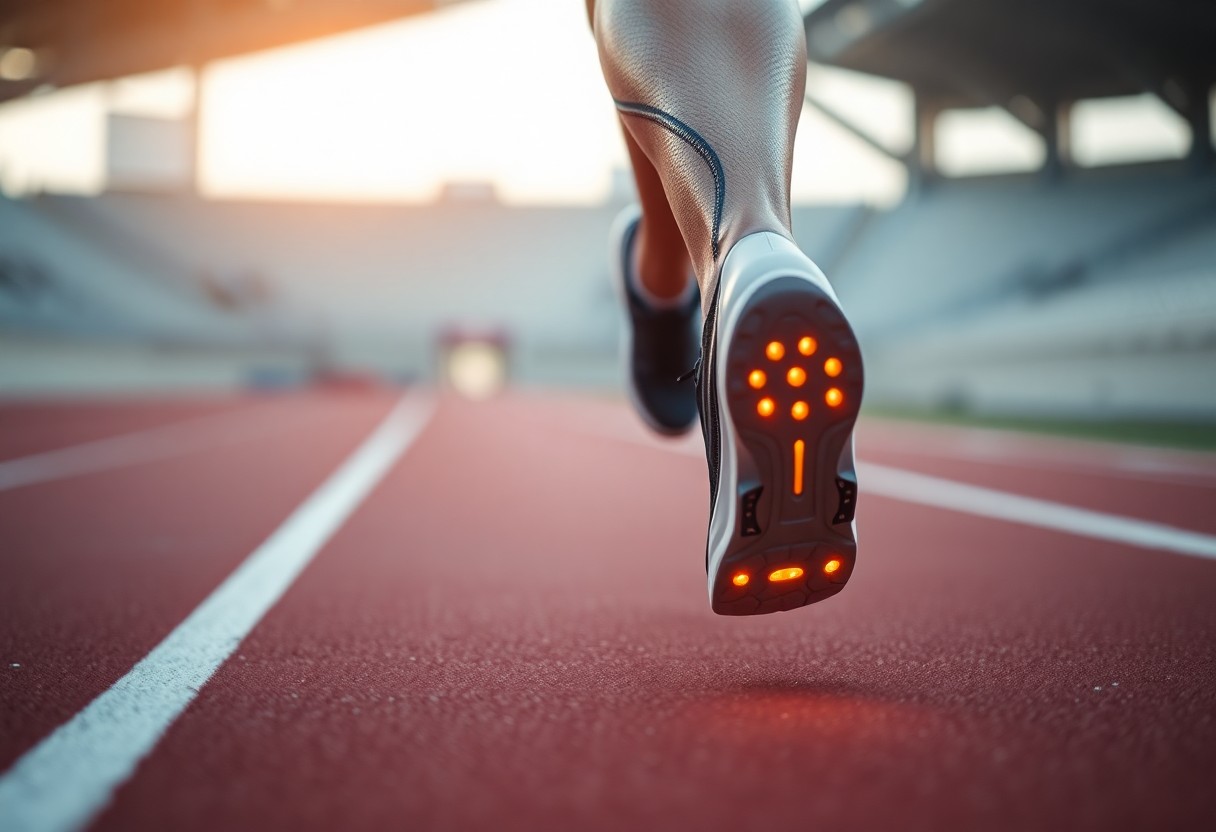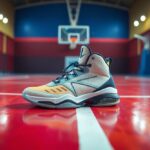
Uncover the groundbreaking innovations in running footwear technology that have reshaped the arena of performance enhancement for endurance athletes. This exploration reveals how these advancements can significantly elevate your running experience.
The realm of performance optimization in endurance running has witnessed a transformative shift due to advanced footwear technology. This technology presents extraordinary opportunities to maximise your athletic capabilities. You will learn how state-of-the-art shoe designs can drastically diminish your metabolic expenditure and enhance running economy. By incorporating carbon fibre plates alongside innovative midsole materials, these shoes deliver exceptional energy return mechanisms that could potentially lower your oxygen consumption by as much as 4%. Regardless of whether you are a seasoned professional or a committed amateur, grasping these biomechanical advancements will empower you to make informed choices regarding your running gear, ultimately enhancing your race performance.
 Continue to delve deeper into the intricate mechanics of running footwear that promises to elevate performance levels:
Continue to delve deeper into the intricate mechanics of running footwear that promises to elevate performance levels:
Maximise Your Running Performance by Understanding Energy Return Mechanisms in Advanced Running Shoes
The technology behind advanced running shoes utilises complex biomechanical principles to enhance energy transfer during movement. Innovative design features collaborate seamlessly to reduce metabolic expenditure, creating a sophisticated system that optimises running efficiency through strategic material engineering and geometric configurations. By centering attention on the mechanics of energy return, these shoes provide runners with a significant competitive edge in both performance and stamina, allowing for longer runs with diminished fatigue levels.
Unlocking Enhanced Performance with the Curvature Dynamics of Carbon Fibre Plates
Carbon fibre plates exploit precise geometric engineering to redirect kinetic energy throughout the running motion. Optimal curvature angles ranging from 12° to 15° facilitate maximum energy storage and return, with finite element modelling revealing energy return efficiencies of up to 93% in prototype designs. These expertly engineered plates act as a spring mechanism, minimising muscular effort during the toe-off phase, thereby enabling runners to conserve energy over extended distances, which directly leads to improved endurance and overall performance.
Comparative Analysis of TPU and EVA in Midsole Innovations for Optimal Running Experience
The choice of materials plays a pivotal role in determining shoe performance, with thermoplastic polyurethane (TPU) emerging as a leading midsole technology. Comparative studies reveal TPU’s significant advantages in energy return and impact absorption, providing runners with enhanced biomechanical efficiency across various running conditions. Athletes aiming to optimise their performance and reduce injury risks during training and competitions must carefully consider the differences between TPU and EVA foam.
| Energy Return | 18% higher in TPU |
| Oxygen Consumption Reduction | 2.4% lower with TPU |
A comprehensive investigation into midsole materials reveals intricate performance characteristics. TPU exhibits superior resilience when compared to traditional EVA foam, consistently maintaining mechanical properties over thousands of compression cycles. Runners benefit from reliable energy return, diminished fatigue, and enhanced long-distance performance through advancements in material science, significantly impacting their training outcomes and competition results.
| Impact Absorption | TPU absorbs 37% more force |
| Rebound Elasticity | 89% maintained across 50,000 cycles |
 Explore further as we investigate the influence of advanced footwear technology on metabolic efficiency:
Explore further as we investigate the influence of advanced footwear technology on metabolic efficiency:
Identifying Who Gains the Most from Advanced Footwear: Assessing Metabolic Efficiency
Advanced footwear technology does not yield the same benefits for all runners. Improvements in metabolic efficiency vary significantly across different demographic groups, with factors such as gender, age, and individual biomechanics playing essential roles in performance enhancement. Recent research has unveiled complex patterns of metabolic response, indicating that the advantages of super shoes extend beyond mere performance metrics to encompass intricate physiological adaptations unique to each runner’s biomechanical profile.
Gender-Specific Performance Enhancements: Examining the Differences
Female runners experience a 3.2% improvement in metabolic power, while males achieve a 4.2% improvement, suggesting sophisticated neuromuscular adaptations. Data on pelvic kinematics shows a 14% greater reduction in hip adduction angle among females when wearing advanced footwear, potentially elucidating the subtle differences in metabolic gains observed between genders. Understanding these variances can aid in personalising training regimens and footwear selections to maximise performance benefits for each gender.
Exploring Age-Related Advantages and Their Impact on Endurance Performance
Masters athletes aged over 40 demonstrate a 2.8% greater reduction in oxygen costs when utilising super shoes, likely compensating for diminished tendon elasticity. Analysis of tibial loading indicates a 12% reduction in cumulative stress per kilometre for older runners, suggesting potential benefits in injury prevention and sustained performance. These findings underscore the pivotal role that advanced footwear technology plays in prolonging the competitive careers of older athletes.
Moreover, the age-related benefits of advanced footwear technology transcend basic performance metrics. Biomechanical studies indicate that older runners undergo more significant adaptations due to compensatory mechanisms. Reduced tendon stiffness and modified muscle recruitment patterns interact with shoe technology to create a distinctive performance enhancement profile. Specifically, the energy return mechanism of the carbon plate appears to counteract age-related biomechanical inefficiencies, potentially prolonging competitive running careers by alleviating the physiological constraints typically associated with aging athletes.
Continue reading to discover more about the consequences of advanced footwear technology on injury risks:
Examining the Impact of Running Footwear on Injury Risk
The introduction of advanced footwear technology brings forth intricate biomechanical interactions that necessitate a detailed examination of potential injury risks. Runners must thoughtfully weigh the trade-offs between performance enhancement and physiological adaptation. Longitudinal studies disclose subtle yet significant alterations in muscular recruitment patterns, joint loading, and proprioceptive feedback when transitioning to high-performance running shoes, highlighting the necessity for a balanced approach to both training and recovery.
Injury Analysis: Evaluating the Costs Associated with Enhanced Performance
Biomechanical research indicates a 9% increase in Achilles tendon strain rates among users of super shoes during high-intensity training. Additionally, plantar pressure mapping reveals a 22% increase in forefoot loading compared to standard trainers, particularly on challenging terrains such as downhill running. These insights suggest that while metabolic efficiency may improve, runners should implement targeted strength and adaptation protocols to mitigate potential injury risks and safeguard long-term athletic health.
Optimising Training Protocols for Effective Gait Adaptations
Your biomechanical response to advanced footwear necessitates strategic adjustments in your training regimen. Gait retraining becomes essential to maximise the unique energy return mechanisms inherent to carbon-plated shoes. Runners should concentrate on developing neuromuscular patterns that align with the shoe’s biomechanical design, thus potentially reducing injury risk and optimising performance benefits.
Comprehensive gait adaptation strategies require multifaceted approaches to effectively integrate advanced footwear technology. Biomechanical analysis suggests that runners typically need around 6 to 8 weeks of progressive training to fully adapt to the distinctive mechanical properties of super shoes. This adaptation phase should incorporate targeted eccentric strengthening protocols, modified interval training techniques, and meticulous monitoring of lower limb biomechanics. Professional athletes and dedicated runners can greatly benefit from periodic 3D gait analysis to track subtle shifts in movement patterns, ensuring the optimal integration of advanced footwear technology with individual biomechanical traits.
 Dive into the future of footwear technology and its potential implications for runners:
Dive into the future of footwear technology and its potential implications for runners:
Anticipating Future Innovations in Running Footwear Technology
The advent of emerging technologies is set to revolutionise running shoe design, pushing the limits of biomechanical efficiency and performance optimisation. Cutting-edge research focuses on personalised solutions that adapt to individual biomechanics, utilising advanced materials, computational modelling, and integrated sensor technologies to forge a new generation of intelligent footwear tailored for elite athletes.
Transforming Footwear Design Through 3D Printed Midsoles for Customised Performance
Optimisation algorithms for lattice structures now facilitate precise regional stiffness variations that correspond to individual foot pressure maps. Prototype evaluations indicate a 5.1% additional metabolic savings compared to mass-produced models, with computational design enabling unprecedented customisation of midsole geometries to maximise energy return while minimising biomechanical stress. This innovative methodology guarantees that each runner can achieve optimal performance personalised to their unique physical attributes.
Integrating Smart Technology for Enhanced Performance Monitoring
Emerging sensor technologies are evolving running shoes into sophisticated performance tracking instruments. Real-time ground reaction force feedback systems can lower oxygen costs by 1.9% through micro-adjustments in cadence, offering runners immediate biomechanical insights throughout training and competition. These advancements are critical for athletes seeking to refine their technique and performance metrics.
The integration of advanced sensors signifies a monumental leap in performance monitoring technology. Multi-axis accelerometers, pressure-sensitive matrices, and embedded microprocessors now capture intricate biomechanical data with unmatched precision. These intelligent systems analyse gait mechanics, impact forces, and energy expenditure in real-time, furnishing runners with detailed insights into their movement patterns. Machine learning algorithms can now predict potential injury risks, optimise training loads, and suggest personalised technique modifications based on comprehensive movement analyses, thereby transforming running shoes from mere equipment into active performance optimisation tools.
Finally, attain a profound understanding of the evolving landscape shaped by advanced footwear technology in endurance running:
Embracing the Future: The Evolution of Advanced Footwear Technology
In summary, you have journeyed through the transformative landscape of advanced footwear technology within the realm of endurance running. Your insights now encompass how innovative design features, such as carbon plates and high-performance midsole materials, can significantly lower metabolic costs and enhance running efficiency. By harnessing scientific insights, you can recognise that these shoes provide more than just marginal gains—they represent a fundamental shift in athletic performance capabilities. Investing in such technology could potentially lead to improved running economy, decreased energy expenditure, and optimised biomechanical responses across a diverse range of athletic demographics.
The Article Biomechanical Efficiency of Advanced Footwear Technology: Metabolic Cost Reduction and Performance Enhancement in Endurance Running appeared first on My Shoes Finder.
The Article Biomechanical Efficiency in Advanced Footwear for Runners Was Found On https://limitsofstrategy.com






